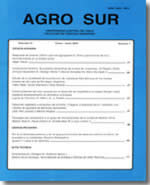Levels of organochlorine pesticides in human breast milk from Mexico City
Main Article Content
Abstract
The organochlorine pesticides content was analyzed in thirty seven human milk samples derived from mothers from the urban zone of Mexico city ( hospital 1) and in twenty six samples from another health center (hospital 2) located in a suburban zone of the same city, between 1997 and 1999. The analyses were carried out by gas-liquid chromatography using a capillary column and electron capture detector. The results from hospital 1 showed the following percentages of occurrence and concentrations expressed as mg/g fat base: b- Hexachlorocyclohexane, b-HCH: (37.8%, 0.70); dieldrín (62,2%, 1.74); aldrín (54%, 0.30); heptachlor (48.6%, 0.40); p-p’ DDT (37,8%, 1,11); p-p’ DDE (32.4%, 1.06). The findings form hospital 2 from suburban zone showed b- HCH (65%, 0.53); aldrín (76.9%, 0,06); heptachlor (38.4%, 0.13); p-p’ DDT (26.9%, 0.18); p-p’ DDE (96.1%, 0.65). Hospital 1 showed critical levels of aldrín + dieldrín, heptachlor and DDT + metabolites: 13.6; 6.9 y 2.0 times the LMR value, respectively. In hospital 2 (suburban zone) the relationship was 0.4; 1.7 y 0.7.

